Astronomers have discovered seven distant galaxies aligned with a galaxy cluster; together, they form one of the most unique configurations of galaxies ever seen.
This arrangement of warped and stretched galaxies contains the largest "Einstein cross," in reference to repeated views of the same galaxy in the same image due to consequences of general relativity — namely, gravitational lensing. The newly discovered, strongly lensed galaxies are collectively referred to as the "Carousel Lens." The galaxies appear to be stretched and swirled in the Carousel Lens because of the influence of a so-called "lensing galaxy cluster," which is located closer to Earth at 5 billion light-years away.
Ultimately, this discovery could help solve some of the most pressing mysteries of cosmology. Chief among these mysteries are the natures of dark energy, the invisible force accelerating the expansion of the universe, and dark matter, the invisible stuff that makes up 80% of the matter in the cosmos.
The seven unique galaxies are located at distances ranging from 7.6 billion to 12 billion light-years away from Earth. This is close to the observing limit of the 13.8 billion-year-old cosmos, meaning we couldn't see further that this area even with the most advanced telescopes. That's because because this region of space is accelerating away from us too quickly.
In the Carousel Lens, a number of galaxies also appear in more than one location. Of particular interest to astronomers, dwelling in the Carousel Lens is an Einstein Cross created from four repeated occurrences of galaxy number 4 (4a, 4b, 4c, and 4d in the image below.
Related: James Webb Space Telescope spots 'Cosmic Gems' in the extremely early universe (video)
"This is an amazingly lucky 'galactic line-up' — a chance alignment of multiple galaxies across a line-of-sight spanning most of the observable universe," team member David Schlegel, a senior scientist in Berkeley Lab's Physics Division, said in a statement. "Finding one such alignment is a needle in the haystack. Finding all of these is like eight needles precisely lined up inside that haystack."
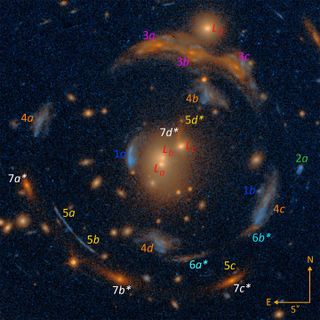
These aspects of this galactic arrangement show the intricacies of a mind-blowing physics phenomenon called gravitational lensing, first suggested by Albert Einstein in 1915.
The warped physics of gravitational lensing
Gravitational lensing is a concept that arose from Einstein's most revolutionary theory, general relativity. Also referred to as the "geometric theory of gravity," general relativity superseded Isaac Newton's theory of gravity. It suggests that the presence of mass in the fabric of space and time, united as a 4-dimensional entity called "spacetime," causes that fabric to be "warped."
A commonly used analogy for this is the placement of balls of increasing mass on a stretched rubber sheet. In this 2D analog, a golf ball causes more curvature than a ping-pong ball, a bowling ball creates more curvature than a golf ball, and a cannonball creates quite extreme curvature.
In spacetime, gravity arises from this curvature, so the larger an object's "warp," the larger its gravitational influence. Thus, planets have stronger gravity than moons, stars have stronger gravity than planets, and black holes have stronger gravity than all three.
This doesn't just explain the orbits of bodies around others with greater masses, but it also tells us something really interesting about how light is impacted by a spacetime warp.
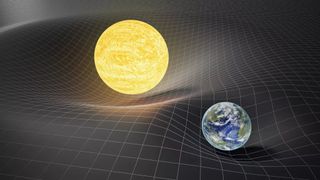
Though light usually travels in a straight line, the curvature of the very fabric of spacetime changes the definition of what a straight line actually is. To picture that, simply imagine drawing a straight line on a sheet of paper and then picking up that paper and rolling it in different orientations.
This all means that when an object of tremendous mass, like a cluster of galaxies, sits between Earth and a background source of light, it acts as a gravitational lens, shifting that background object's apparent position in the sky. But, light from a single object can take different paths around the lensing body. The closer to the concentration of mass, the more the light will be diverted.
That means light from a single object can arrive at Earth and our telescopes at different times, amplifying the appearance of smearing, for instance. The same object can even appear in multiple places in the same image, with these representations of images appearing in circular arrangements called Einstein Rings. And an Einstein Ring can more specifically be categorized as an Einstein Cross if it fits certain criteria, as we see for the Carousel Lens.
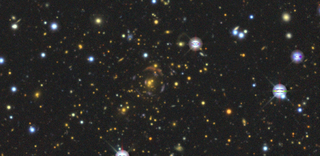
In rare instances, a near-perfect configuration of objects causes a strong gravitational lens, and that is what data from the Dark Energy Spectroscopic Instrument (DESI) Legacy Imaging Surveys and recent observations from NASA’s Hubble Space Telescope have revealed in the form of the Carousel Lens.
"Our team has been searching for strong lenses and modeling the most valuable systems," said Xiaosheng Huang, a team member and researcher at Berkeley Lab’s Supernova Cosmology Project, said in the statement. "The Carousel Lens is an incredible alignment of seven galaxies in five groupings that line up nearly perfectly behind the foreground cluster lens. As they appear through the lens, the multiple images of each of the background galaxies form approximately concentric circular patterns around the foreground lens, as in a carousel.
"It's an unprecedented discovery, and the computational model generated shows a highly promising prospect for measuring the properties of the cosmos, including those of dark matter and dark energy."
The strength of the Carousel Lens and the model created using the Perlmutter supercomputer at the National Energy Research Scientific Computing Center (NERSC) could help investigate dark energy and dark matter, sometimes collectively referred to as the "dark universe."
"This is an extremely unusual alignment, which by itself will provide a testbed for cosmological studies," Nathalie Palanque-Delabrouille, director of Berkeley Lab’s Physics Division, said in the statement. "It also shows how the imaging done for DESI can be leveraged for other scientific applications such as investigating the mysteries of dark matter and the accelerating expansion of the universe, which is driven by dark energy."
The team's research is published in The Astrophysical Journal.
.png)
 2 hours ago
10
2 hours ago
10
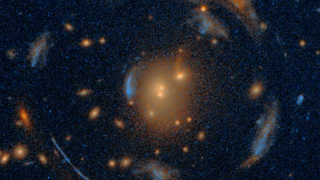
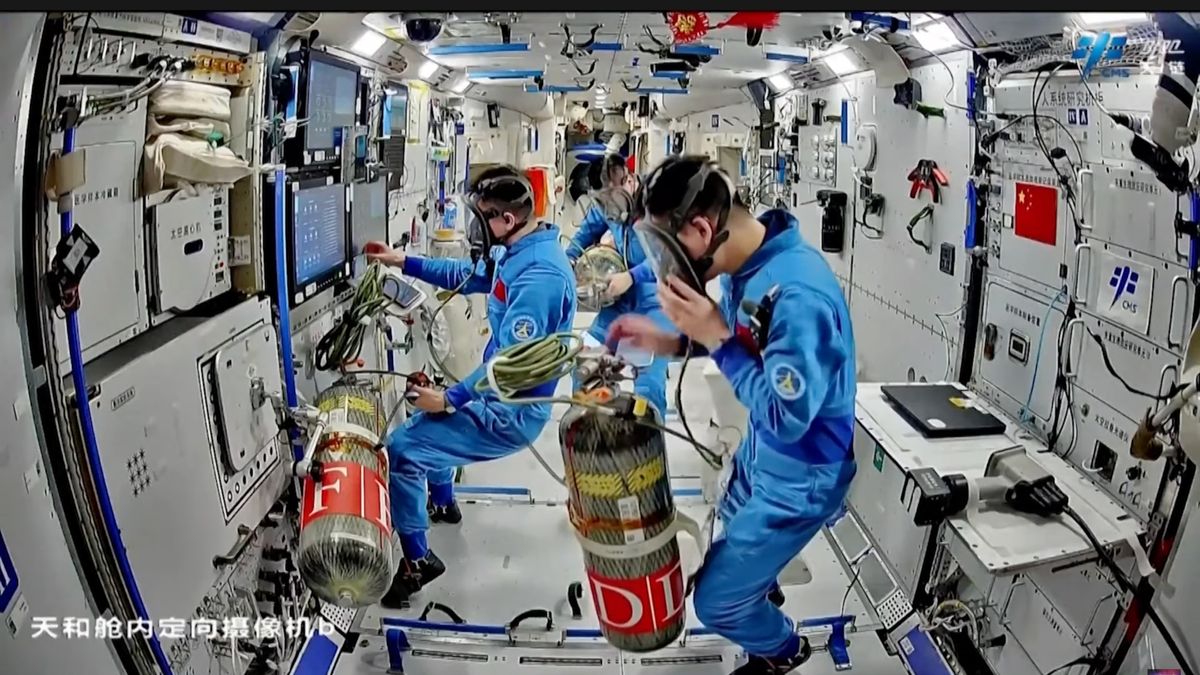































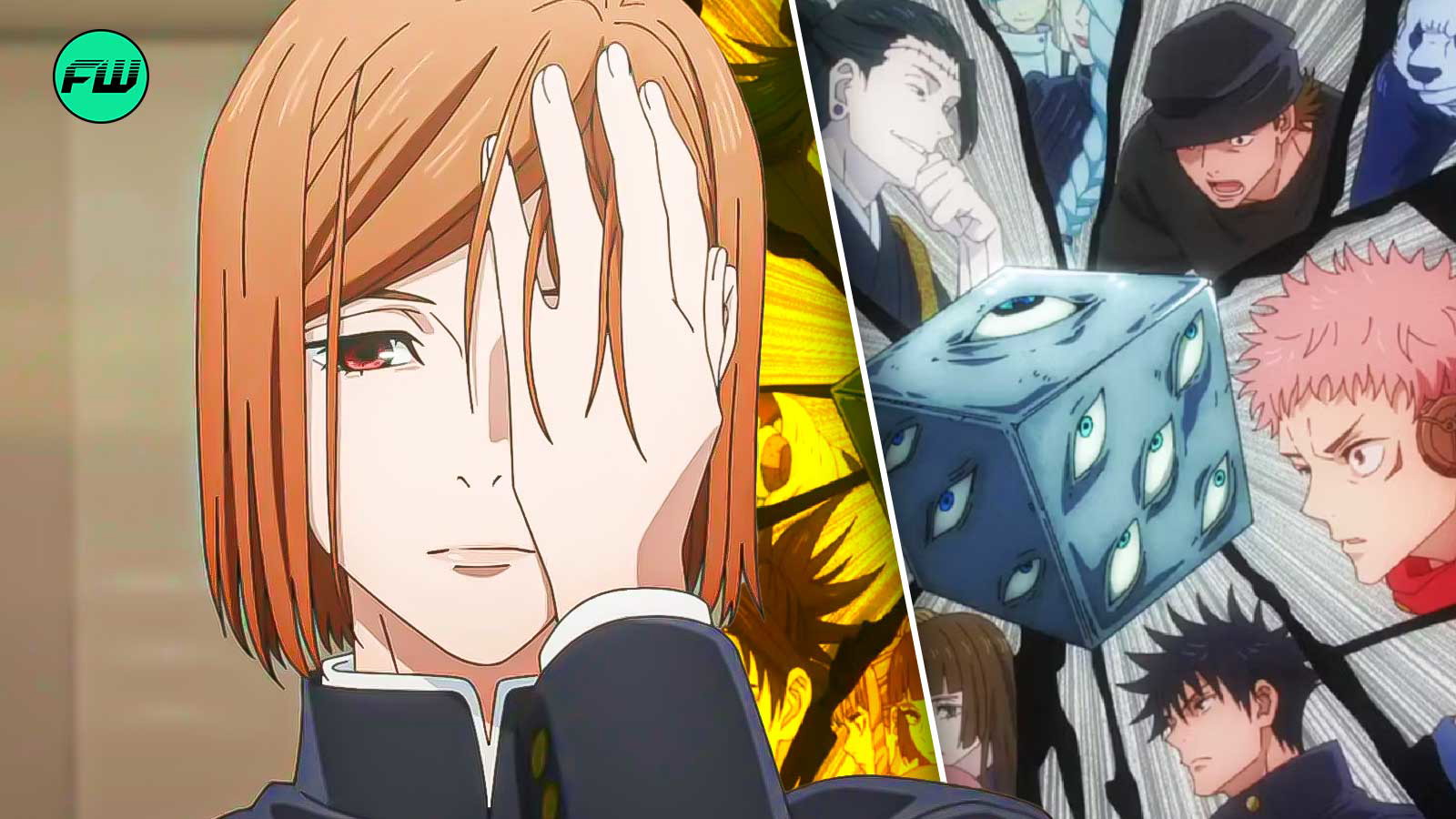
 Bengali (BD) ·
Bengali (BD) ·  English (US) ·
English (US) ·